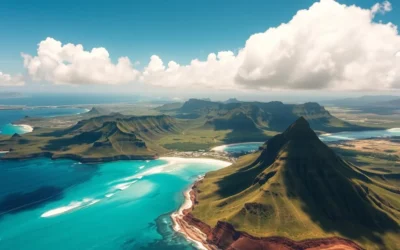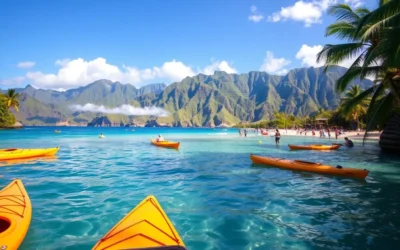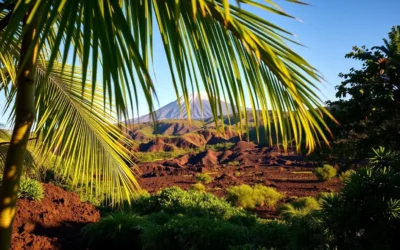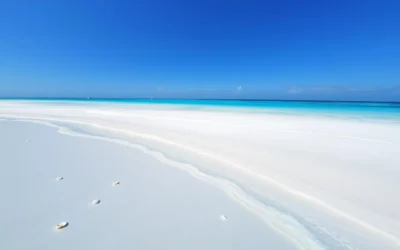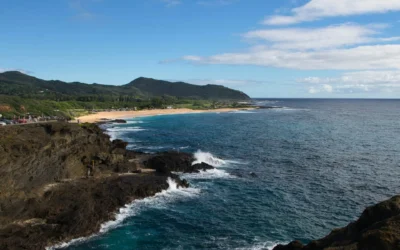✓ Accommodations ✓ Flights ✓ Rental Cars ✓ Tours & Activities
Imagine standing on the rugged coastline of Molokai, Hawaii, gazing out at the tallest waterfall in the United States.
Oloʻupena Falls is a breathtaking natural wonder that cascades 2,953 feet down dramatic sea cliffs into the Pacific Ocean.
This seasonal waterfall is a rare sight, making it a truly special destination for your Hawaii adventure.
As you explore this comprehensive guide, you’ll discover essential visitor information to help you plan your visit and witness the majesty of Oloʻupena Falls.
Discovering Oloʻupena Falls: America’s Tallest Waterfall
As you explore the natural wonders of Molokai, Hawaii, you’ll discover Oloʻupena Falls, a breathtaking spectacle that stands as America’s tallest waterfall. This natural wonder is a testament to the island’s unique geological history and the forces that have shaped it over millions of years.

Key Facts and Statistics
Oloʻupena Falls is an impressive natural formation, with its height being a significant aspect of its grandeur. Here are some key facts that highlight its importance:
- Oloʻupena Falls is recognized as the tallest waterfall in the United States.
- The falls are a result of the erosion of volcanic rock over millions of years.
- The waterfall is situated between the Pelekunu and Wailau valleys, creating a dramatic landscape.
Geological Formation and History
The formation of Oloʻupena Falls is closely tied to the geological history of Molokai, particularly the northeastern region. The falls were formed through the erosion of rock, creating deep channels and steep cliffs. The unique combination of volcanic activity, heavy rainfall, and ocean erosion has resulted in the breathtaking vista you see today.
The East Molokai volcano, which rises nearly 5,000 feet above sea level, was created by approximately 1.5 million years of volcanic activity. This volcanic activity, coupled with intensive erosion, formed the deep valleys on either side of the falls, creating the steep ridges from which the waterfall descends.
Location and Geography of Oloʻupena Falls
Nestled between two of Molokai’s most stunning valleys, Oloʻupena Falls is a breathtaking spectacle. The falls are located on the island of Molokai, Hawaii, an area known for its rugged natural beauty.

The Dramatic Sea Cliffs of Molokai
The coastline around Oloʻupena Falls features dramatic sea cliffs, with the Haloku Cliffs rising to heights of over 3,300 feet directly from the water’s edge. This creates a striking landscape that is both beautiful and awe-inspiring.
Between Pelekunu and Wailau Valleys
Oloʻupena Falls is situated between the Pelekunu and Wailau valleys, in a 2.48 to 3.1-mile-long area. The nearly vertical ridges in this region are a result of the heavy rainfall on the East Molokai volcano, which has carved out the volcanic shield over time, creating this unique area.
The geography of this area on the island is characterized by lush vegetation and numerous seasonal waterfalls, making it a fascinating region to explore.
How to Experience Oloʻupena Falls, Molokai, Hawaii
Oloʻupena Falls is accessible via thrilling helicopter tours or scenic boat rides along the coastline. The waterfall, located in a remote location, is a shallow depression in an impassable cliff, making these guided tours the best way to witness its grandeur.
Helicopter Tours

A helicopter tour offers a bird’s-eye view of Oloʻupena Falls, providing a unique perspective on this natural wonder. You’ll soar above the sea cliffs, taking in the breathtaking scenery and gaining an appreciation for the falls’ remote location and inaccessible terrain.
Boat Excursions Along the Coastline

You can experience Oloʻupena Falls from sea level by booking a guided boat excursion that navigates along Molokai’s northern coastline. When approaching by boat, you’ll gain a unique perspective of the falls as they cascade down the towering sea cliffs, with the opportunity to feel the mist and hear the sound of falling water.
Your boat tour will typically depart from either Molokai or neighboring Maui, navigating carefully along the coastline to provide views of multiple waterfalls, including Oloʻupena. Due to the remote location and often challenging sea conditions, you’ll find that boat tours are less frequent than helicopter options and highly dependent on favorable weather.
Best Time to Visit Oloʻupena Falls
To witness the majesty of Oloʻupena Falls, understanding the optimal viewing times is crucial. The falls are a breathtaking spectacle, but their visibility and accessibility depend heavily on weather conditions.
Seasonal Flow Patterns
The flow of Oloʻupena Falls varies with the seasons. Generally, the winter months bring more substantial rainfall, which enhances the waterfall’s flow. However, this period also comes with more unpredictable weather patterns.
| Season | Water Flow | Weather Conditions |
|---|---|---|
| Winter | Strong | Variable, rainy |
| Summer | Moderate | Generally calm, sunny |
Weather Considerations for Viewing
When planning your visit, it’s essential to monitor weather forecasts closely. Helicopter and boat tours are highly dependent on favorable conditions. Wind is a particular concern as it can alter the falls’ appearance and affect visibility. On windy days, the water can be blown upward or sideways, creating a unique spectacle.
For visitors, morning hours typically offer the calmest conditions for both helicopter and boat tours. If your tour is canceled due to weather, consider visiting Kalaupapa National Historical Park or Palaau State Park as alternative destinations to witness the magnificent sea cliffs.

Cultural Significance to Native Hawaiians
The cultural significance of Oloʻupena Falls to Native Hawaiians is rooted in their deep connection to the land and their ancestral heritage. For centuries, the dramatic landscapes of Molokai, including its towering waterfalls, have been integral to the stories, traditions, and spiritual practices of Native Hawaiian communities.
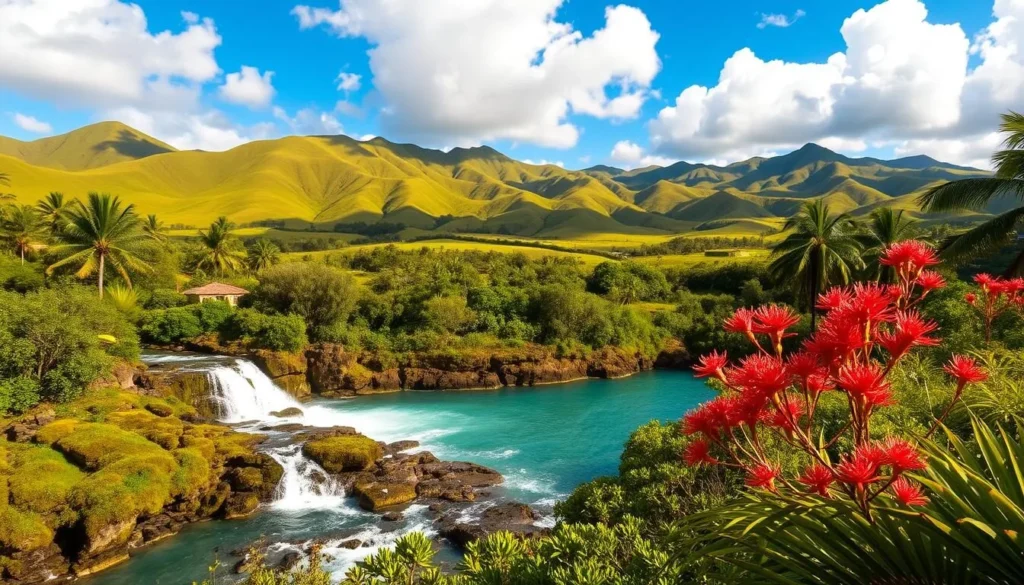
Sacred Places in Hawaiian Tradition
In Hawaiian tradition, places like Oloʻupena Falls are considered sacred. These sites are often associated with ancestral stories (moʻolelo) that explain their formation and significance. The narratives surrounding these natural wonders frequently feature Hawaiian deities, demigods, and ancestors whose actions are believed to have shaped the landscape.
Ancestral Stories and Connections
The connections between people and place, referred to as “ʻāina” in Hawaiian, are fundamental to Hawaiian cultural identity. Specific locations are often tied to family lineages and histories, preserving knowledge that extends back centuries. When you explore this area of Molokai, you’re experiencing a place that has been significant to Native Hawaiians for countless generations, long before it became part of the United States. By acknowledging these ancestral connections, you participate in a more respectful and informed approach to experiencing one of Hawaii’s most spectacular natural wonders.
- Many traditional chants and oral histories reference the dramatic cliffs and valleys of Molokai, preserving knowledge about these places.
- The connections between people and place are fundamental to Hawaiian cultural identity, with specific locations often tied to family lineages and histories.
- By understanding and respecting these ancestral stories, visitors can foster a deeper appreciation for the cultural significance of Oloʻupena Falls.
Nearby Attractions Worth Exploring
Beyond the majestic Oloʻupena Falls, Molokai offers a diverse range of experiences that showcase its natural beauty and rich history. Visitors can explore historical sites, witness the island’s stunning waterfalls, and enjoy the unique landscapes that make Molokai so special.
Kalaupapa National Historical Park
Kalaupapa National Historical Park is a significant cultural and historical site on Molokai. This park preserves the legacy of the island’s leprosy settlement, which operated from 1866 to 1969. Visitors can take guided tours to learn about the history and significance of this site.

Other Notable Waterfalls on Molokai
Molokai is home to numerous breathtaking waterfalls. Apart from Oloʻupena Falls, Puʻukaʻoku Falls stands out at 2,700 feet, ranking as the 8th tallest waterfall globally. Haloku Falls, another neighbor, descends 2,297 feet along the north shore sea cliffs. For those interested in accessible waterfalls, Hipuapua Falls and Moʻoula Falls in the Hālawa Valley are worth visiting.
Planning Your Visit to Molokai’s Natural Wonders
Exploring Molokai’s stunning natural beauty, including Oloʻupena Falls, is a journey worth taking the time to plan. To witness the breathtaking beauty of this 900-meter waterfall, you’ll need to consider the best ways to experience Molokai’s rugged landscape.
When traveling to Molokai, you can base yourself on the island or take day trips from Maui. Helicopter tours and boat excursions offer unique perspectives on the island’s dramatic sea cliffs and Oloʻupena Falls. Be sure to book tours in advance and research operators carefully to ensure a smooth journey.
By understanding the island’s geography and accessing a map of Molokai, you can make the most of your visit to this less-visited corner of the United States. Consider extending your stay to explore other natural wonders, including Kalaupapa National Historical Park.
The above is subject to change.
Check back often to TRAVEL.COM for the latest travel tips and deals.


